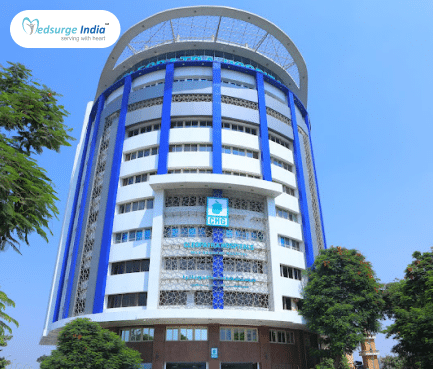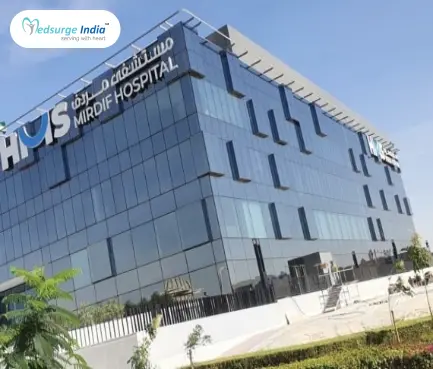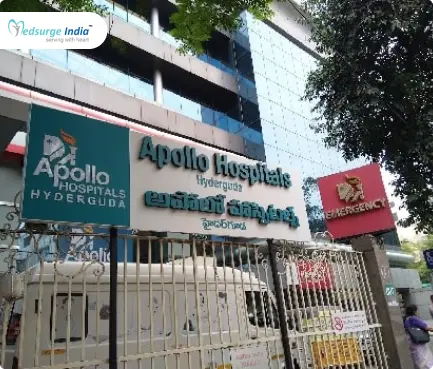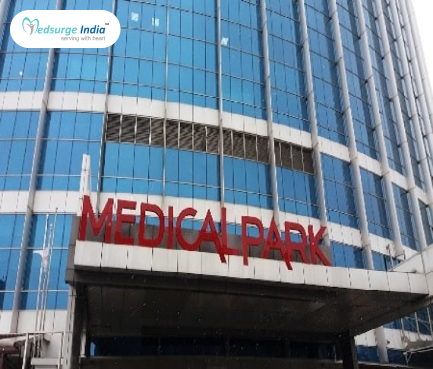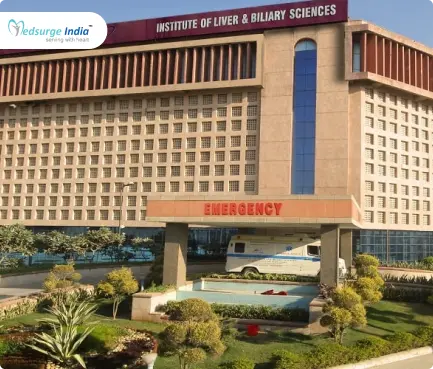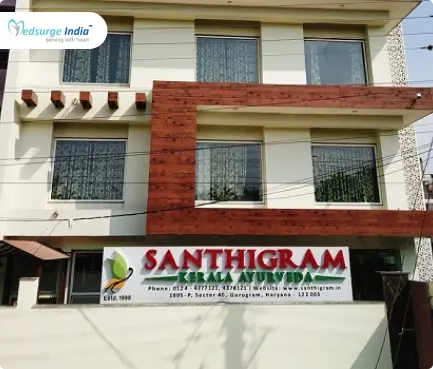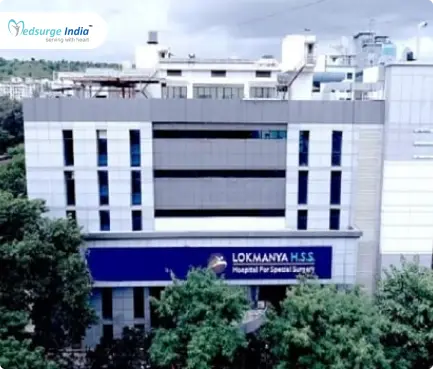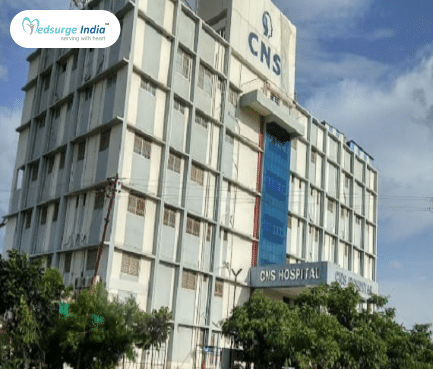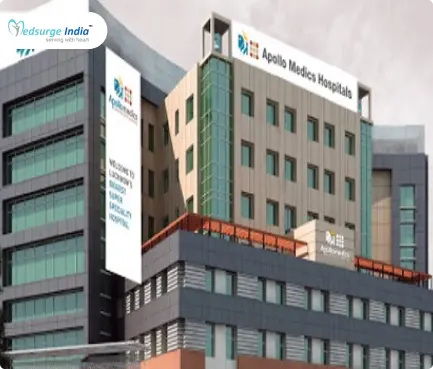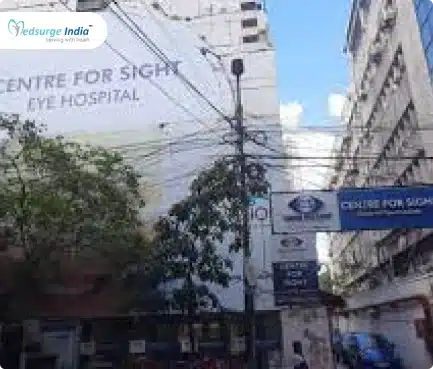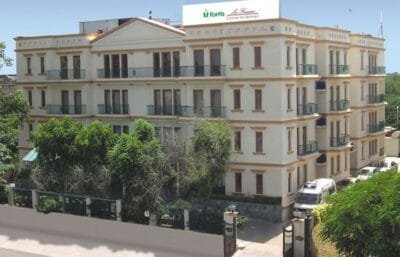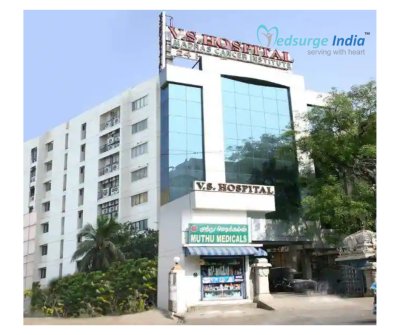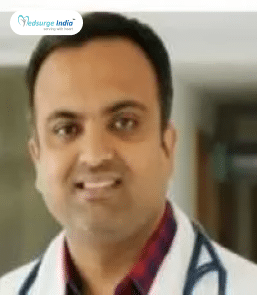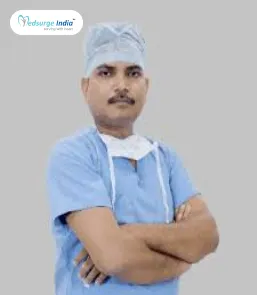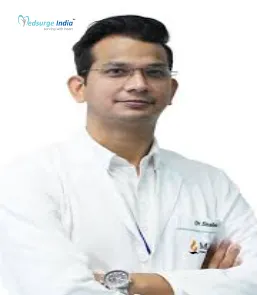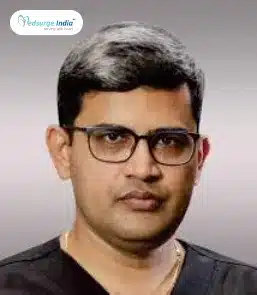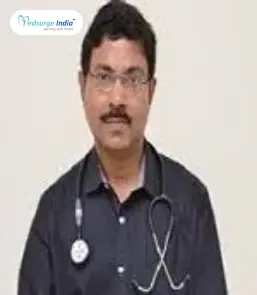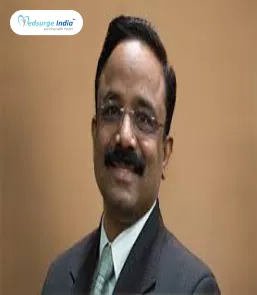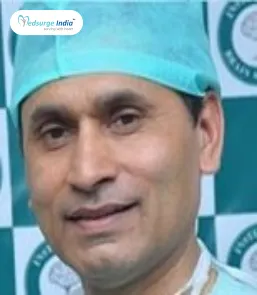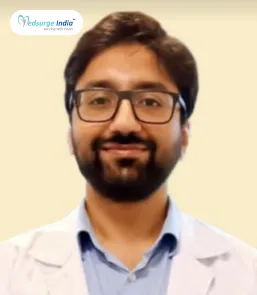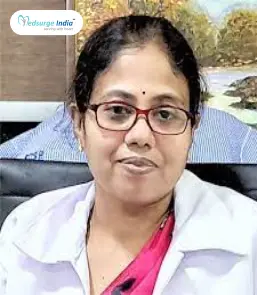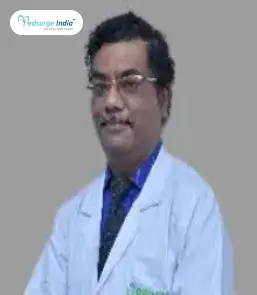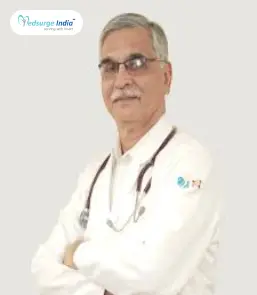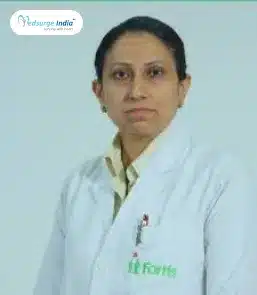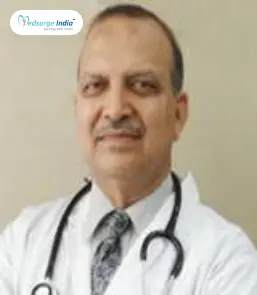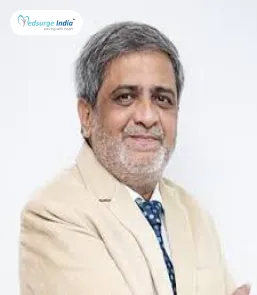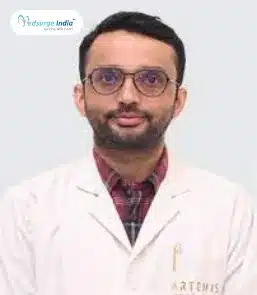
When conservative treatments for cerebral palsy (CP), including braces and oral medications, fail to deliver adequate relief, your physician may explore the possibility of neurosurgery.
One potential procedure is selective dorsal rhizotomy (SDR), which can enhance mobility for numerous children experiencing spasticity accompanied by dystonia (characterized by heightened muscle stiffness and spasms).
India is one of the few countries that do SDR in patients with cerebral palsy at an affordable price. Its is also one of the many reason why many patients from out of India come to have selective dorsal rhizotomy surgery in India.
Selective Dorsal Rhizotomy Surgery Cost in India
Selective Dorsal Rhizotomy Surgery Cost in India range from INR 1,00,800 to INR 3,78,000 ($1200 to $4500). The cost of the treatment will depend on various factors such as the patient’s condition, the type of hospital you choose to stay in, the location of the hospital, the medications, etc.
Furthermore, the cost we have stated above is only for the treatment. Other factors will depend on the final cost of the treatment.
Factors That Can Affect The Cost of Selective Dorsal Rhizotomy Surgery in India
The standard of medical care and services is on par with the world’s top hospitals in terms of quality and standard even after deducting the cost of lodging, meals, and transportation. The following factors may have an impact on selective dorsal rhizotomy surgery cost in India:
- Hospital reputation and infrastructure.
- The expertise and experience of medical professionals.
- The type and frequency of diagnostic procedures.
- The choice of treatment modality.
- Medication costs.
- Duration of treatment.
- Geographical location.
- Hospitalization expenses.
- Government policies and subsidies.
- Medical tourism packages.
What is Selective Dorsal Rhizotomy (SDR)?
Selective Dorsal Rhizotomy (SDR) is a surgical intervention designed to alleviate spasticity in the lower extremities.
Spasticity arises from irregular communication between the brain and the nervous system. SDR effectively addresses this condition by severing the nerve rootlets within the spinal canal that transmit abnormal signals to the muscles.
Cerebral palsy is the most prevalent cause of spasticity in children. While SDR does not serve as a cure for cerebral palsy, it aims to enhance the quality of life and/or mobility for children impacted by this condition.
Who Can Benefit From Selective Dorsal Rhizotomy surgery?
Children undergo a thorough evaluation to ascertain whether Selective Dorsal Rhizotomy (SDR) is the most suitable treatment option. The likelihood of benefiting from the procedure is higher for children who:
- exhibit spasticity primarily in their legs
- are capable of walking independently or with the assistance of a walker or braces, or possess the potential to achieve this
- are physically and mentally prepared to engage in intensive physical therapy following the procedure
- demonstrate motivation and the ability to adhere to instructions
Conversely, SDR may be less advantageous for children who experience significant spasticity in their arms or who require support to maintain an upright sitting position. It is advisable to consult with your child’s neurosurgeon and cerebral palsy care team regarding all available treatment options.
What Are The Type of Diagnosis Done Before SDR Surgery?
Selective dorsal rhizotomy (SDR) is not universally effective for all children with cerebral palsy; therefore, your child must undergo a comprehensive screening process to assess their suitability for the procedure.
Your child will likely be evaluated by several specialists, including:
- Pediatric neurosurgeon: Experience in performing SDR on pediatric patients and will assess your child’s lower limbs and the condition of their underlying muscles.
- Pediatric orthopaedic surgeon: Evaluate your child to determine if any orthopaedic interventions are required to address issues such as bone deformities or contractures, which involve severe muscle stiffness.
- Physical therapist: Will assess your child’s spasticity levels and muscle functionality in their legs.
- Occupational therapist: Will review your child’s current and potential capabilities in performing daily activities, including walking, eating, dressing, and playing.
Also Read:- Top Neurosurgeons in India
Following individual meetings between each team member and your child, the group will collectively evaluate the potential benefits of SDR.
Prior to the surgery, your child may require additional assessments, which may include:
- Comprehensive evaluations conducted by physical and occupational therapists to thoroughly assess your child’s physical capabilities. They will record your child’s movements and daily activities, subsequently developing a rehabilitation plan for post-surgery therapy.
- A brain MRI to confirm the absence of any other neurological concerns.
- A consultation with a pediatric neurologist to discuss any existing neurological conditions.
- A discussion with the pediatric neurosurgeon to review the surgical risks and outline the recovery process.
- An appointment with an anesthesiologist to verify the safety of general anesthesia for your child.
How is Selective Dorasla Rhizotomy Performed?
The procedure for selective dorsal rhizotomy surgery generally involves the following steps:
- Initially, an anesthesiologist administers general anesthesia to the child, ensuring that they are unconscious and do not experience pain during the operation.
- Subsequently, the neurosurgeon creates a small incision in the center of the child’s lower back.
- Through this incision, the surgeon forms a small “window” in the spine by navigating through the muscle, bone, and the protective layer of the spinal cord (dura) to access the nerve fibers beneath.
- The neurosurgeon then distinguishes and separates the motor nerves from the sensory nerves, taking care to protect the motor nerves throughout the remainder of the procedure.
- Electrodes are then attached to the sensory nerve roots, and through the use of electromyography (EMG), the surgeon stimulates the nerves to identify which ones contribute to spasticity and which function normally. Multiple stimulations are performed to accurately determine which nerves will be severed.
- The surgeon proceeds to cut a specific percentage of the abnormal sensory nerves, with the exact nerves and quantity varying for each child.
- After completing the nerve sectioning, the incision is closed in layers.
- Finally, the healthcare team transfers the child to a recovery room, where they will be closely monitored during the recovery process, typically in the intensive care unit (ICU).
Children typically remain in the hospital for about five days following surgery. During the initial 24 to 48 hours, it is essential for your child to remain in a flat position. Physical therapy will commence a few days post-surgery.
Helpful:- Top 10 Neurology Hospitals in India
Why Medsurge India?
Medsurge India is a prestigious support network system for patients looking for doctors, hospitals, and specialized treatments. We’ll find the most suitable medical options for you. Regarding your medical issues, our team will give you a list of certified, reputable, and trusted doctors and hospitals. Additionally, we offer a treatment strategy that fits your budget. Apart, we assist patients with obtaining travel authorizations, medical visas, and a multitude of other things.
Get Free Cost Estimation
The Most Important Frequently Asked Questions
Q: Who Qualified for SDR?
A: Individuals who are typically suitable candidates for Selective Dorsal Rhizotomy (SDR) surgery are those diagnosed with spastic cerebral palsy (CP). Additionally, children who have sustained injuries to the brain or spinal cord may also be evaluated for this surgical option. A child may be deemed a viable candidate for SDR if they possess some capacity for ambulation—whether with assistance or independently—yet experience limitations due to spasticity in the lower extremities.
Q: What Are Some Risk of SDR?
A: The dorsal rhizotomy is a complex neurosurgical operation. Like other significant neurosurgical interventions, it entails certain risks. The most serious complications include paralysis of the legs, loss of bladder and bowel control, and sensory deficits. Additionally, there is a potential for wound infection and meningitis.
Q: What Is the Success Rate of SDR?
A: According to a study it indicated that following the surgical procedure, there were enhancements in various aspects of mobility: 91% reported improvements in walking quality, 81% in standing, 57% in sitting, 75% in balance while walking, 88% in exercise capability, 77% in endurance, and 43% in recreational sports activities. Additionally, muscle and joint pain that existed prior to the surgery showed improvement in 64% of the cases post-operation.
Q: When is the Best Time to Have SDR?
A: Due to the extensive therapy required, children aged 3 to 6 are likely to gain the most advantages from this intervention; however, older children, adolescents, and young adults may also experience benefits from selective dorsal rhizotomy (SDR).
This surgical procedure can enhance children’s independence prior to entering kindergarten. By reducing the emphasis on mobility, they can devote more attention to their education and social interactions.
Top Hospitals for Selective Dorsal Rhizotomy Surgery in India
Top Doctors for Neurology And Neurosurgery
Dr. Mohamed Ataulla Shariff
Senior Consultant
Experience: 12+ years of experience
Narayana Multispeciality Hospital, R S Naidu Nagar, Mysore
Mysore, India
Dr. Tariq Matin
Senior Consultant
Experience: 10 years of experience
Dharamshila Narayana Superspeciality Hospital New Delhi
New Delhi, India
Dr. Ashis Das
Consultant
Experience: 22 years of experience
Medica Superspecialty Hospital
Kolkata, India
Dr. A.K. Roy
Consultant
Experience: 42+ years of experience
Manipal ( Old Airport Road) Hospital
Bangalore, India
Dr. Vikas Naik
Consultant
Experience: 10 years of experience
Fortis Hospital, Bangalore (Bannerghatta Road)
Bangalore, India
Dr. Dinakar. A
Consultant
Experience: 27 years of experience
KIMS Sunshine Hospitals, Begumpet
Hyderabad, India
Dr. Manuranjan Goyari
Experience: 10+ years of experience
Narayana Superspeciality Hospital, Amingaon, Guwahati
Guwahati, India
Dr. Swatantra Mishra
Senior Consultant
Experience: 20 years of experience
Holy Family Hospital, New Delhi
New Delhi, India
Dr. Gaurav Sharma
Senior Consultant
Experience: 12+ years of experience
Max Super Speciality Hospital Bathinda
Bathinda, India
Dr. Harjinder Singh Bhatoe
Consultant
Experience: 45 years of experience
Max Super Speciality Hospital, Patparganj, New Delhi
New Delhi, India
Dr. Ravindra Srivastava
Consultant
Experience: 26 years of experience
Primus Super Speciality Hospital, New Delhi
New Delhi, India
Dr. Gopal Poduval
Senior Consultant
Experience: 32 years of experience
Apollo Medics Super Speciality Hospital, Lucknow
Lucknow, India
Dr. Rima Khanna
Consultant
Experience: 12 years of experience
Fortis Hospital Delhi Shalimar Bagh
New Delhi, India
Dr. Vivek Barun
Associate Consultant
Experience: 10 years of experience
Fortis Hospital Delhi Shalimar Bagh
New Delhi, India

